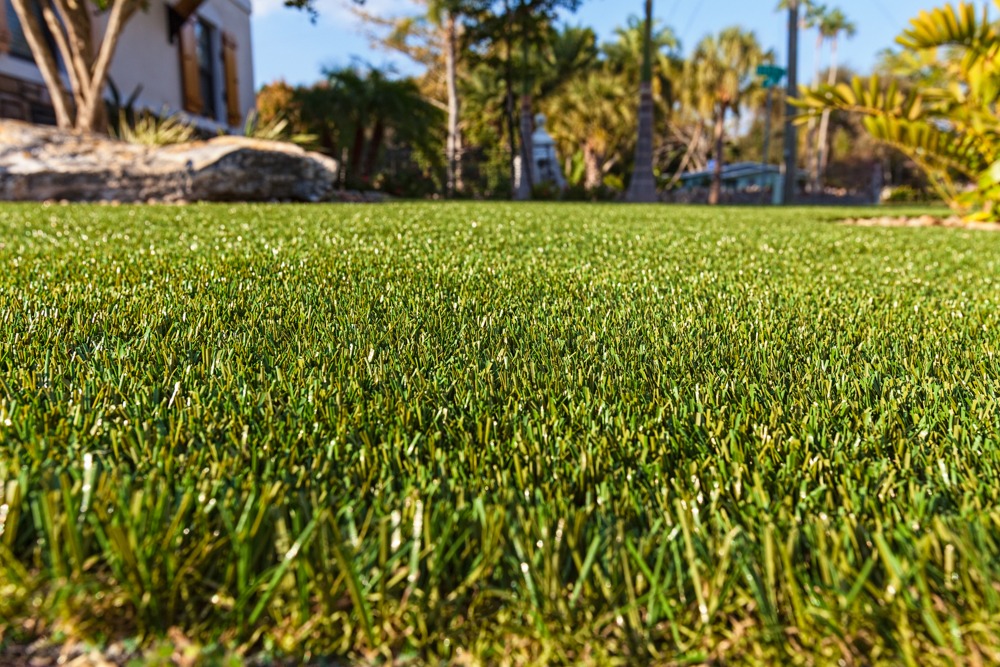- BACKYARD
- COMMERCIAL
- ENVIRONMENT
- FIELD TURF NEWS
- GOLF
- MAINTENANCE
- NEWS
- PETS
- POOL
- RESIDENTIAL
- TURF TIPS
The Real Difference Between Artificial Grass and Organic Sod


When contemplating a home upgrade or change to your yard, it’s tempting to think that natural sod grass is the best possible solution. Sure, we often think of “organic” as being better when researching a purchase. The fact is, there are countless benefits to choosing artificial turf for your home landscape. In fact, when weighing the pros and cons of synthetic grass vs. organic sod, you’ll be hard pressed to find a better choice than artificial turf. Aesthetically, functionally, environmentally and financially, it’s simply the best option.
Read more to learn why artificial grass is the best possible option for your home.
Even Better Than the Real Thing
In an ideal world, organic sod would look lush, beautiful and green at all times. Unfortunately, that’s simply not the reality. Yellow and brown stains can easily occur from sun bleaching, pet waste or uneven watering. And then there are the seasons to worry about as Mother Nature takes her toll on your yard. With artificial grass, however, you’ll have consistently lush, green grass year-round, no matter what climate you live in.
No Pain to Maintain
Sure, natural grass grows from the earth. But keeping it green and lush requires a near-endless amount of hard work, water and chemicals. You’ll have to weed the lawn, fertilize it, mow it and hope that you can give it enough water to keep it green. With artificial grass, maintenance is incredibly straightforward. Your yard will always look the same, and you can simply rinse it whenever you need to dispose of pet waste or other materials.
Total Drainage
You might be asking how it’s possible to “rinse” off your lawn with a hose. Well, artificial turf is typically fitted with a drainage system, which means liquid will travel right through it. That means no more mud or wet pants when you walk through the yard. It also means, as mentioned, you can just hose away any nasty pet waste or other unwanted organic waste. Best of all, if you live in a climate prone to rain or even flooding, you’ll no longer have to worry about large pools or puddles after heavy showers.
No Water Waste
Speaking of water, a natural lawn can be unquenchably thirsty. An average household’s organic sod lawn uses over 100,000 gallons of water per year. An artificial lawn can cut that amount by up to 70%, which is both an enormous cost savings and a wonderful way to conserve natural resources. When you realize you no longer need to use harsh chemicals, which can pollute water supplies, the financial and environmental cost is even lower.
Long-Lasting Lawns
So you’ve installed an organic lawn, stocked up on chemicals and equipment, and put in the hours of labor to get it looking fresh and clean. Well, if it’s a heavy foot traffic area for pets or humans, you still could be facing repairs or even a full lawn replacement within the first year. On the other hand, artificial turf is incredibly durable and can last up to 20 years. Advanced UV inhibitors protect the synthetic fibers from fading in the sun, so it will stay greener for longer. Further, artificial turf deters pets from digging and does not invite pests like insects, fleas, rabbits or gophers to build a home. As a result, it’s a long-lasting lawn solution that will keep you pleased for many, many years.
Ready to make the switch to artificial turf? Get in touch with a FieldTurf expert to discuss your property’s potential.


